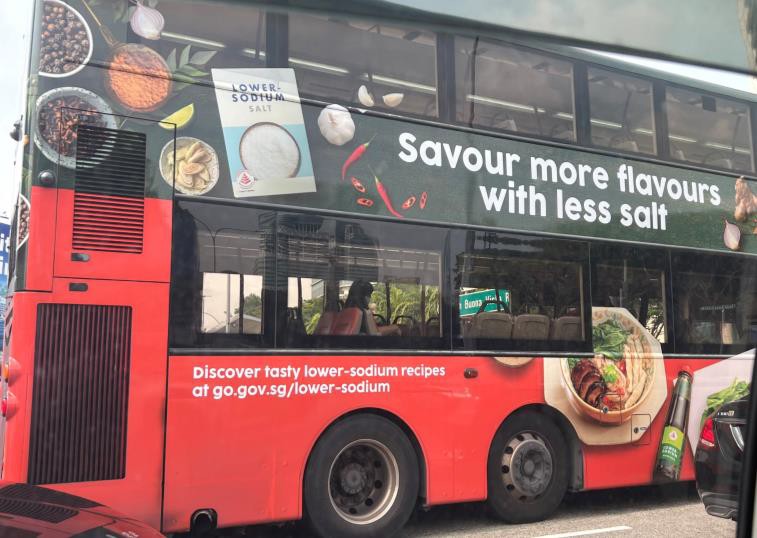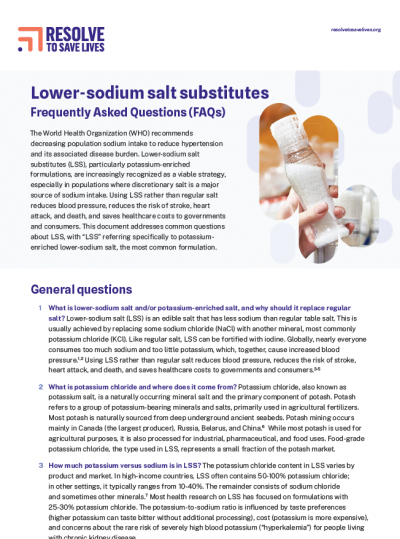How we save lives / Healthier food / Low-sodium salt revolution
The low-sodium salt revolution
Replacing regular salt with potassium-enriched, low-sodium salt could be the next big public health victory.

The challenge
High-salt diets are killing us—but cutting salt often cuts flavor, too.
The solution
Low-sodium salts can replace regular salt—and deliver a familiar taste with fewer health risks.
The impact
Explore
Health Affairs: Switching To Reduced-Sodium Salt Can Save Lives
Use of lower-sodium salt substitutes: WHO guideline

Singapore Case Study: Reducing Singaporeans’ High Sodium Intake

Partners
World Health Organisation (WHO)
Benchmarks for health emergencies
We partner with the World Health Organization to standardize best practices for preparedness, including developing a benchmarking tool to simplify and accelerate preparedness planning under International Health Regulations.
The cost of health care worker infections
In our advocacy efforts to protect health care workers, we released a joint report with the World Bank to calculate the true cost of health care worker infections during the COVID-19 pandemic, as well as wider socioeconomic implications.
In depth
How low-sodium salt works
In many countries, most salt in the diet is added during cooking or at the table—meaning that reducing salt requires people to change their behavior. But what if salt itself could be less harmful?
Low-sodium salt tastes like regular salt, but it’s a much healthier choice. Most low-sodium salts replace 10% to 50% of sodium—the harmful ingredient in salt—with potassium. This is a double win. Reducing sodium reduces blood pressure. Increasing potassium, which most people don’t consume enough of, further reduces blood pressure and improves heart health.
Studies in China, India and Peru have shown that switching to low-sodium salt reduces sodium intake and lowers blood pressure effectively and at low cost. A study in China found that people who used the low-sodium salt were less likely to have a stroke or other cardiovascular event, or to die prematurely.
Low-sodium salts can replace regular salt in many places:
- Everyone can use them at home.
- Cooks can use them in restaurants and in street foods.
- Governments can purchase them for use in public institutions, including schools and cafeterias in government office buildings.
- Food manufacturers can use them in packaged foods. How Resolve to Save Lives is driving the low-sodium salt revolution We’re collaborating with research institutions, advocates and our country partners to make low-sodium salt the next big win for global public health.
- Raising awareness of low-sodium salts and their benefits can drive demand. Most people—even doctors—don’t know that low-sodium salts are a healthier option.
- Improving availability—to consumers and packaged food manufacturers—can pave the way to wider use.
- Affordability can be improved by increasing market size and scaling production, using subsidies and vouchers, or by taxing regular salt.
Safety considerations
Low sodium salt is generally safe, but because of its potassium content, it may not be appropriate for people with some health conditions (such as kidney disease). Given the limited potential risk, low-sodium salts should carry a warning, but this should not discourage consumers who don’t have contraindications.






